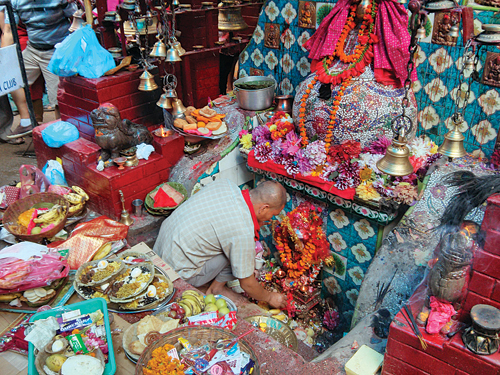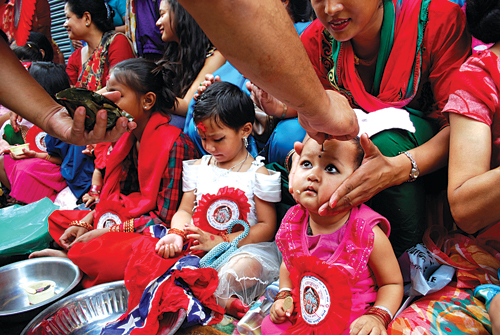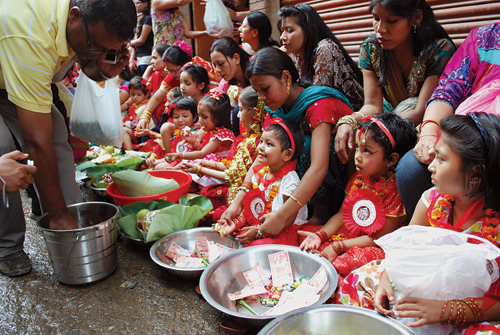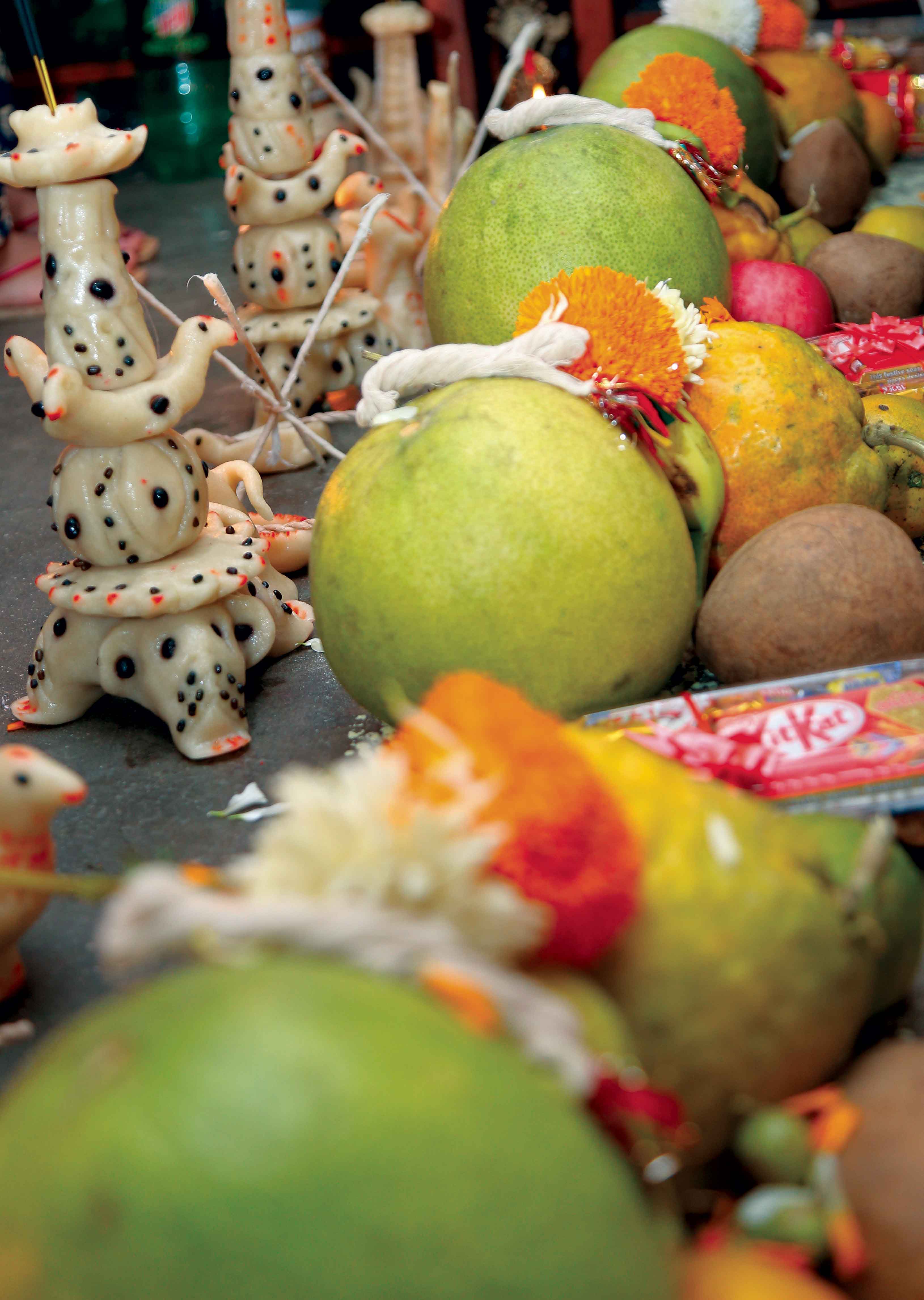Kumari Puja literally means worship of the virgin. And that is all there is to it – to the casual onlooker. If one looks deeper, however, one will find a richer and more meaningful significance behind this elaborate festival, to participate in which people have literally broken each other’s bones.

The cult of the Kumari is deep-rooted among Kathmandu Valley’s Hindu and Buddhist people. However, the Kumari Puja ceremony held every year during the month of Asadh (June-July) in Balkumari in the historical core of Kathmandu city is conducted strictly following tantric Hindu rituals. The festivities kick off after a Newa Hindu priest of the Karmacharya caste oversees the ritual sacrifice of a goat to the ancient shrine of Balkumari (or child virgin) located in a small abyss at the side of the busy Balkumari street which formed the backbone of the trade route between Nepal and Tibet from the medieval period to the middle of the 20th century.
Local community elders who
have been organizing the Kumari Puja, for which the entire area is totally closed off to vehicular traffic, have memories that go as far back as fifty years, since when this mega event has been held annually. Obviously the tradition is much older, although noone has been able to ascertain when the Kumari Puja custom actually started. Kumari is the virgin goddess. The Malla kings, who reigned over the Kathmandu Valley from the 13th to the 18th  century, sought the right to rule from
century, sought the right to rule from
the royal Kumari, who they revered as the human manifestation of Taleju Bhawani, their tutelary deity.
The royal Kumari’s tradition is celebrated fervently till today, and has survived the downfall of the Malla and Shah dynasties, and is one of the most exotic enduring practices in Nepal where a little girl from the the Buddhist Shakya clan is deified as a living goddess until she reaches puberty. Also, the Newa people, indigenous inhabitants of the Kathmandu Valley, have since ancient times deemed all children to be the embodiment of god, a tradition that is rare, if not unique, worldwide.

Weeks before the Kumari Puja of Balkumari takes place, people jostle to get tickets to the event so that the pre-adolescent girls in their family can participate in the rite. Organizers allocate high priority to girls who have a tendency to fall sick frequently, as it is believed that partaking in this Puja earns divine merit that will keep them healthy. To earn a place in the ceremony, the only criterion is that a family must contribute a food item (grains, fruits, sweets) that is distributed to all other participants. This is a good example of how ancient religious and social practices have been designed such that gain is possible only by giving.
Exactly 365 tickets are given away each year – one can easily equate this number to signify the worship of a Kumari every single day of the year. This has also been a contentious issue in the past, where, in one particular occasion, after all 365 tickets had been given away, the family of a very sick girl sternly demanded to be included in the Puja. The argument that followed went out of control and a fistfight ensued. The melee ended with one of the organizers being hospitalized with a fractured limb.
The participating girls are decked up, venerated and treated to a lavish feast not only by her family but also by hundreds of other families who take part in this grand affair. In addition to the 365 girl participants, three boys from the Newa Hindu community of the Pradhan and Pradhananga castes are iconized as Hindu deities Ganesh, Bhairav and Kumar, and are adulated during the gala event.
Among the Newa community, only girls who have not yet undergone the Ihee rite qualify to participate in the Kumari Puja observance. Ihee is a unique tradition practiced by the Newa people since thousands of years where a girl who has not yet reached puberty is symbolically wedded to a representation of Lord Vishnu, with the Bael fruit (wood apple; biological name Aegle marmelos) as the witness. The Ihee ceremony thus ends the girl’s status as a virgin, effectively revoking her right to participate in the Kumari Puja ritual. The Kumari Puja is a celebration of not only being female but also of a state of being pure that commemorates the period of her life before she undergoes her first symbolic marriage.
The Newa people have always given a very high status to the female gender in all religious, social and cultural facets of their society. Among the various symbolic values of the Kumari Puja tradition, the one that best exemplifies the highly cultured civilization of the Newa people is that this ritual is designed to give prominence to the fairer sex right from a very young age, and they are elevated to the rank of a goddess, albeit for a day, in a public ceremony that is conducted with much pomp and pageantry.
If the participants of the Kumari Puja were to understand the allegory behind this extravagant event, rather than practice the ritual blindly, there are greater chances that this rich, meaningful tradition, and many others like these, will be accepted more easily by future generations – generations that are bound to ask “why” in everything and anything they are asked to do.










